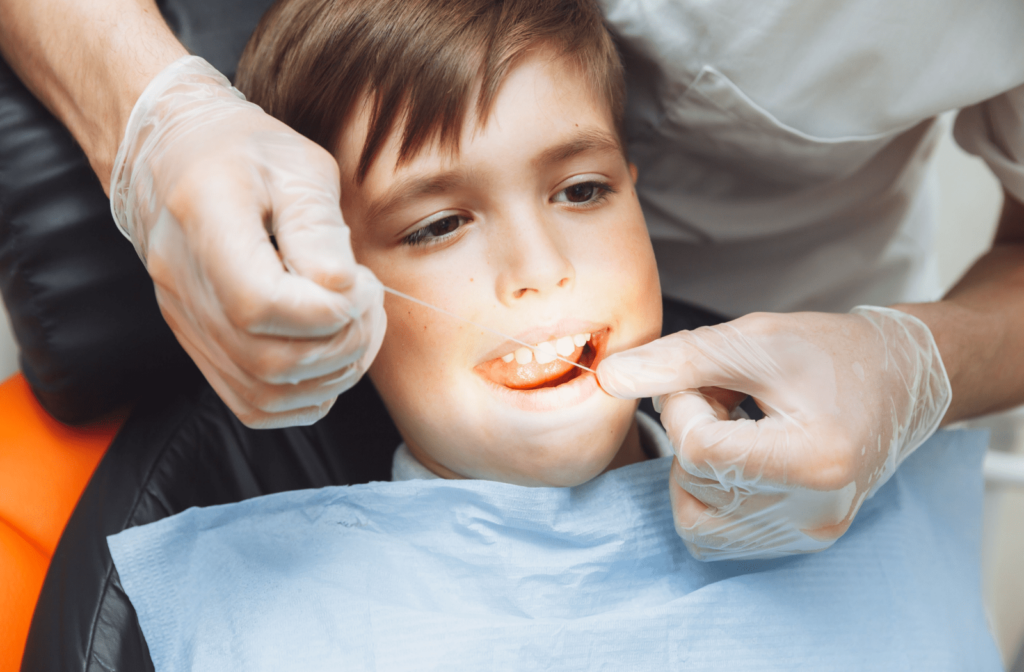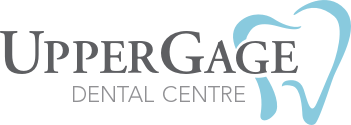If we’re being honest, it’s not always easy to encourage and develop good oral hygiene habits in children. But it is essential. Regular cleanings and exams, proper flossing and brushing techniques, and a healthy diet all help maintain the health of your teeth.
It’s easy to book your child a dental exam and cleaning every 6 months or to ensure they’re eating tooth-approved foods. Even making sure they’re brushing twice a day isn’t too complicated. But getting a child to floss properly could be more challenging, depending on their age.
What can you do as a parent to help your child learn to floss properly and make sure they’re doing so efficiently? We have
Why Is Flossing Important?
You may be wondering if flossing is a big deal, and it is. Even with excellent brushing habits, a toothbrush simply cannot clean the same places in your mouth as dental floss can. If you regularly floss and brush your teeth, you can potentially reduce mild gum disease.
As we eat and drink, plaque builds up on our teeth. If left uncleaned, plaque hardens into tartar, which can only be cleaned during a professional cleaning at the dentist.
When to Start Flossing Your Child’s Teeth
There isn’t really a set age that a child must start flossing, and each child’s mouth develops a little bit differently. The rule of thumb is that when any of their teeth touch one another, they need to be flossed because a toothbrush alone won’t be enough.
How to Floss Your Child’s Teeth
Helping your child floss their teeth isn’t much different from flossing your own:
- Wash your hands thoroughly.
- Tear approximately 18 inches of floss off the spool.
- Wrap each end around your middle fingers, leaving around 2 inches of exposed floss between them.
- Gently slide the floss between your child’s teeth.
- Rub the floss along the tooth to clean it down to the gum line.
- Once you get to the gums, form a “C” around the tooth and gently follow the tooth below the gum line.
- Repeat these steps until each tooth is clean.
Tips & Tricks
Here are a few tips and tricks to make it easier or more effective:
- After cleaning each tooth, wrap the “dirty” floss around one middle finger while unwrapping some “clean” floss from the other. This prevents the transfer of bacteria from one tooth to the other.
- Wind the floss around your middle fingers, not your index fingers. This is a common mistake that makes it harder to grasp the floss.
- When flossing your child’s teeth, ensure you’re being gentle. This is especially important when down near their gums.
Encouraging Healthy Dental Habits
Ultimately, the goal should be that your child can floss their teeth by themselves. Like anything, it takes practice and someone to show them how. One of the best ways you can do this is by showing them the proper flossing technique on your own teeth. This includes correctly holding the floss right through to gently cleaning each tooth.
Other than demonstrating it, here are a few tips and tricks to encourage healthy oral habits:
- Allow your child to pick the flavour of dental floss as an encouragement to let you floss their teeth and learn to do it themselves.
- Using a pre-threaded flosser might be a good option. Not only can they be easier to use for a child to use, but sometimes you can get them with fun coloured handles.
- Many kids love stickers or other little rewards. A sticker chart may be a great motivator if the issue is encouraging the child to floss daily. If you go this route, the sticker chart can be used to encourage and track your child’s entire daily oral routine.
Additional Considerations for Good Oral Health
As mentioned above, flossing is only part of a good oral health routine. There are a few things you should consider when trying to pass these good habits onto your children:
- Brush with fluoride toothpaste at least twice a day.
- Get a dental exam and cleaning every 6 months as recommended by the Canadian Dental Association or your dentist.
- Minimize sugary food and drink or those that are acidic.
- Avoid brushing your teeth for at least 30 minutes after eating acidic foods because the acid softens tooth enamel temporarily, and vigorous brushing could cause damage.
- Drink lots of water. Not only does this keep you hydrated, but it also helps rinse bacteria from your teeth.
- Rinse once a day with a fluoride mouthwash.
Tips & Tricks from Your Dentist in Hamilton
Give us a call if it’s time for your or your child’s semi-annual exam and cleaning. The helpful staff at Upper Gage Dental Centre can answer your questions or schedule a visit with the dentist. If you’re not having any luck flossing your child’s teeth, your dentist or the dental hygienist can give you a hands-on demonstration while you’re there.



